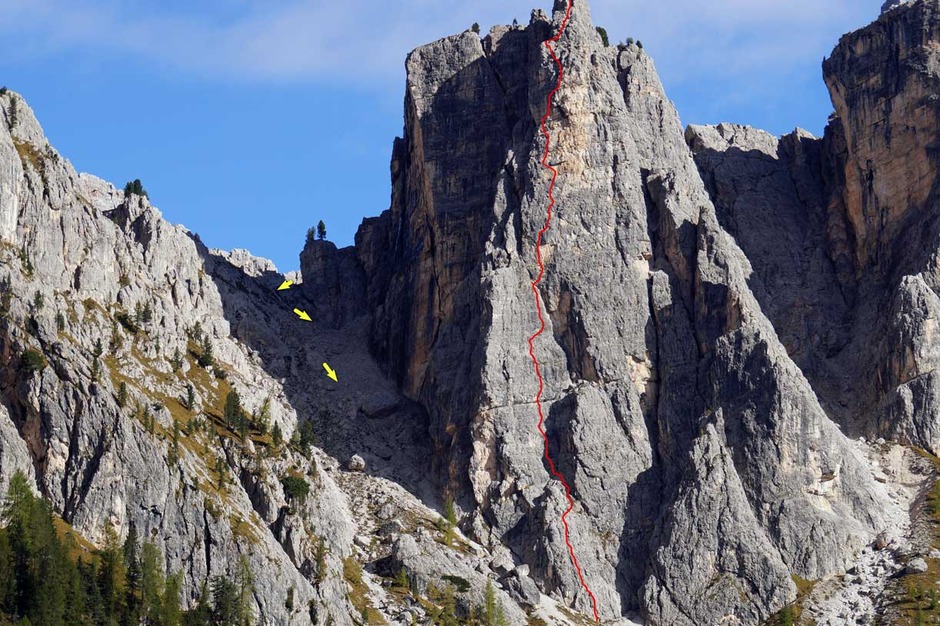Information about the climbing route Via Nikibi
L1 38m 5a/b
Challenging start on an overhang (grey bolt), then the difficulty level keep decreasing up to the belay point on the small terrace (some pitons).
L2 15m 2° grade
Transfer pitch towards the vertical slabs of the pinnacle.
L3 25m 6a+
Slab pitch; the last metres before the belay on a small ledge are challenging.
L4 35m 6a
This pitch begins on an overhanging, technically demanding grey slab. Towards the end, it slightly turns right in order to reach the belay.
L5 30m 5b
On the right side of the belay point, climb up on the slightly sloping grey-black slab that has small but clearly visible holds.
L6 35m 6b/c
The crux, an endurance pitch on a vertical slab. There are small holds at the beginning and then a succession of holes (not always good) up to the belay.
L7 40m 6a
Enjoyable, long pitch that goes past a small overhang before reaching the belay point.
L8 35m 6a+
Challenging pitch that begins with a difficult traverse towards the right, just above the belay, and then continues straight to a good ledge.
L9 25m 3-4° grade
This is an easy pitch but, even so, it requires focus and attention as the rock is sometimes friable and protections are missing.
Equipment
Contact us for booking or for information
tel. +39 3279311671 - booking@dolomitiskirock.com
Contact us











